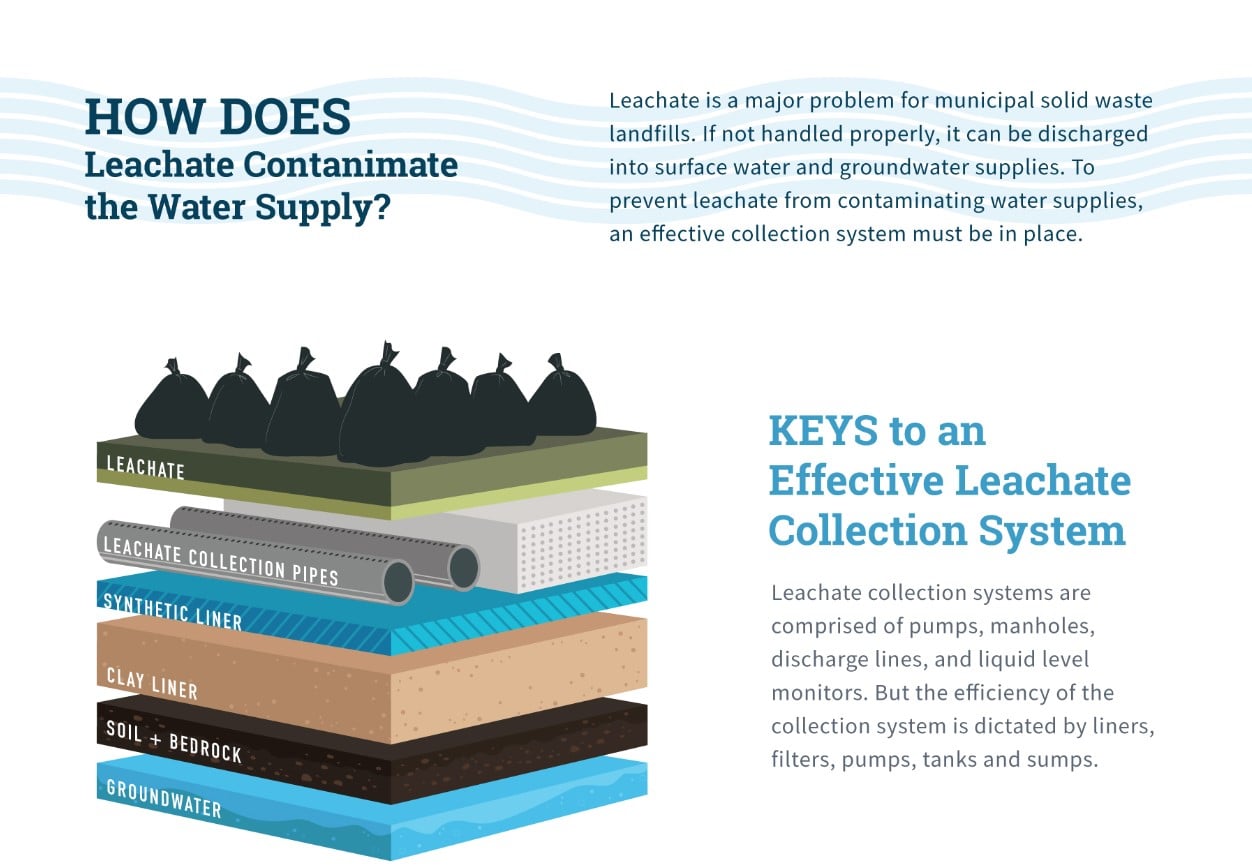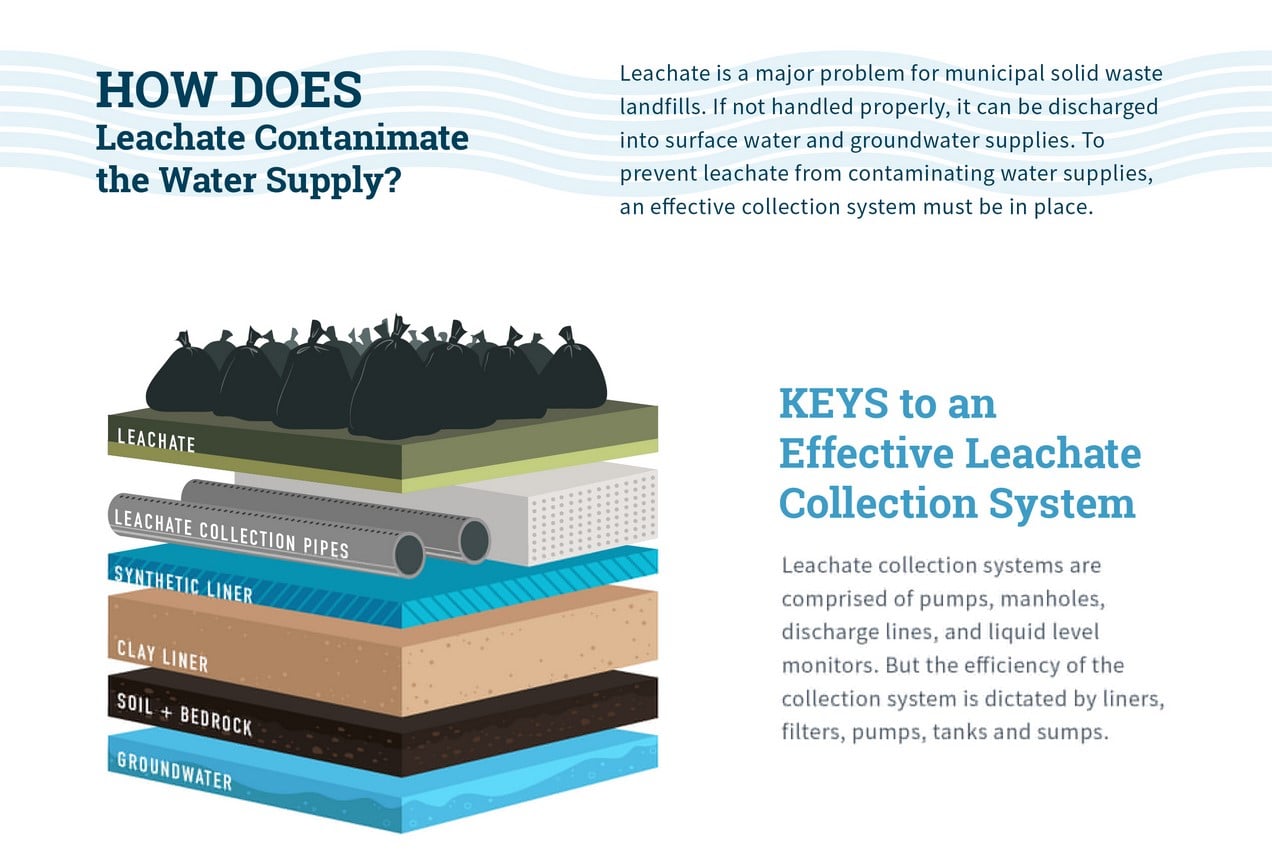Of all the natural resources we have at our disposal, water is the one we couldn’t survive without it. In order to ensure long-term sustainability, we must work tirelessly to safeguard our water supply from harmful contaminants. Leachate is a common contaminant capable of seeping into our water supply. Fortunately, there are steps that can be taken in order to minimize any negative impacts of leachate harmful contaminants. In order to understand these important steps, it’s crucial to understand leachate.
What is Leachate?
Quite simply, leachate is the contaminated liquid that drains to the bottom of a landfill. On its journey downward, it passes through the various waste deposited in the landfill, steeping a brew of hazardous materials that become something like a “toxic tea”.
Q1 hedge fund letters, conference, scoops etc
The liquid that produces leachate typically comes from a combination of rainfall, snowmelt, and the waste itself. The composition of leachate varies and depends on, firstly, how long the landfill has been around and, additionally, the types of waste it may contain. Leachate usually consists of both dissolved and suspended materials.
4 Significant Contaminants Found in Leachate
Dissolved Organic Matter
Alcohols, acids, aldehydes, short-chain sugars, etc. Broken down organic compounds (carbon-based) that come from plants and animals.
Inorganic Macro Components
Sulfate, chloride, iron, aluminum, zinc, and ammonia. Common anons and cations such as iron, chloride, sulfate, aluminium, zinc, and ammonia.
Heavy metals
Lead, Nickel, Copper, and Mercury. Lead, Nickel, Copper, and Mercury that come from construction, mining, and manufacturing.
Xenobiotic Organic Compounds
Halogenated organics (polychlorinated biphenyl, dioxins, etc.). Organic compounds that come from drugs, food additives, and pesticides.
Contamination
Leachate is a huge problem for municipal solid waste landfills. If it is not handled and taken care of properly, it can be discharged into surface water and groundwater supplies. To prevent leachate from leaking in and contaminating water supplies, an effective collection system must be in place.
Leachate Collection System Tips
Leachate collection systems are made up of multiple pumps, manholes, discharge lines, and liquid level monitors. But these don’t necessarily make the system efficient. The efficiency of the collection system is dictated by liners, filters, pumps, and sumps. What are those?
Liners
The job of liners consists of isolating and containing the leachate and protecting the soil and groundwater below.
Filters
A filter’s job, in this case, is to filter out solids and harmful contaminants before passing through the pipe network.
Pumps & Sumps
Pumps and sumps collect leachate in a well and literally pump it in order to treat it.
How is Leachate Treated?
Off-site leachate treatment
This is the less common method where leachate is hauled from or pumped out of the landfill and into an off-site wastewater treatment facility to undergo a disposal process. This method isn’t a very popular one with treatment plant owners -- as you can imagine -- since it puts an added strain on the facility’s operations.
On-site leachate treatment
This method is the more common way to treat leachate contamination. On-site treatment facilities are designed to fulfill the unique needs of a particular landfill site. In addition, this system allows for discharge to a sanitary sewer or a body of water, reducing added costs -- from hauling or disposal -- found in off-site treatment plans.
Harmful Contaminants Cleanups - Leachate Treatment Technologies
How do these treatments actually work? Whether or not they’re on-site or off-site, how is the process conducted?
Biological Treatment
Step one in treating landfill leachate: using various filters to remove nitrogen and any and all other harmful biological compounds.
Chemical-Physical Processes
When organic compounds can be oxidized, a wet oxidation process is used. This process uses many different processes: activated carbon adsorption, precipitation, flocculation, and ion exchange processes.
Harmful Contaminants And Their Environmental Impact
What does all of this mean for the environment?
Leachate does pose environmental risks due to the high concentrations of harmful contaminants and ammonia found within it. However, these risks can be reduced with properly built and properly working landfill sites.
We must work together to keep water -- our most precious resource -- safe and sustainable. Leachate needs to be properly retrieved and treated before being redistributed back into the environment.








